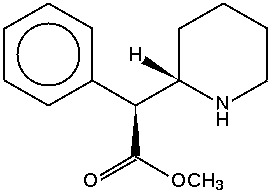Adult attention-deficit hyperactivity disorder (ADHD) is the second most common neuropsychiatric disorder of adulthood, following depressive disorders; it affects about 8 million people, or 4% of the adult U.S. population. But experts estimate that about 80% are unaware that they have the disorder.
ADHD is often hard to recognize in adults. Patients may complain of chronic depression and low self-esteem. A good screening tool is the Adult Self-Report Scale, version 1.1, which is available at www.med.nyu.edu/psych/training/adhd.html.
ADHD is associated with a number of comorbid conditions, such as bipolar disorder, anxiety disorders, and substance abuse disorders. If these impair the patient, they should be treated first. ADHD is the primary target when associated conditions are mild.
Long-acting stimulants and atomoxetine are all first-line treatments. Atomoxetine is the only agent with Food and Drug Administration approval for ADHD in adults, but several methylphenidate formulations and long-acting amphetamine are considered equally good options by experts. Choosing among these for an individual patient depends on several factors including specific symptoms, patient preferences, a family history of response to certain drugs, and toleration of side effects. Sometimes a long-acting stimulant is paired with a short-acting agent for additional coverage. Timing is crucial, because symptoms tend to rebound as a stimulant wears off. It's important to review an agent's time course with the patient. Stimulants may show more of an effect early, but long term, both stimulant and nonstimulant treatments are well tolerated and effective. Some patients prefer the flexibility of short-acting stimulants.
Few data exist on use of these drugs during pregnancy or lactation. All have an FDA pregnancy rating of C. If possible, avoid the listed drugs during the first trimester. Many mothers with ADHD opt not to breast-feed so they can resume treatment as soon as possible.
For more information, visit www.help4adhd.org.
--Mitchel L. Zoler, Editor
--Kerri Wachter, Writer
COPYRIGHT 2004 International Medical News Group
COPYRIGHT 2004 Gale Group



